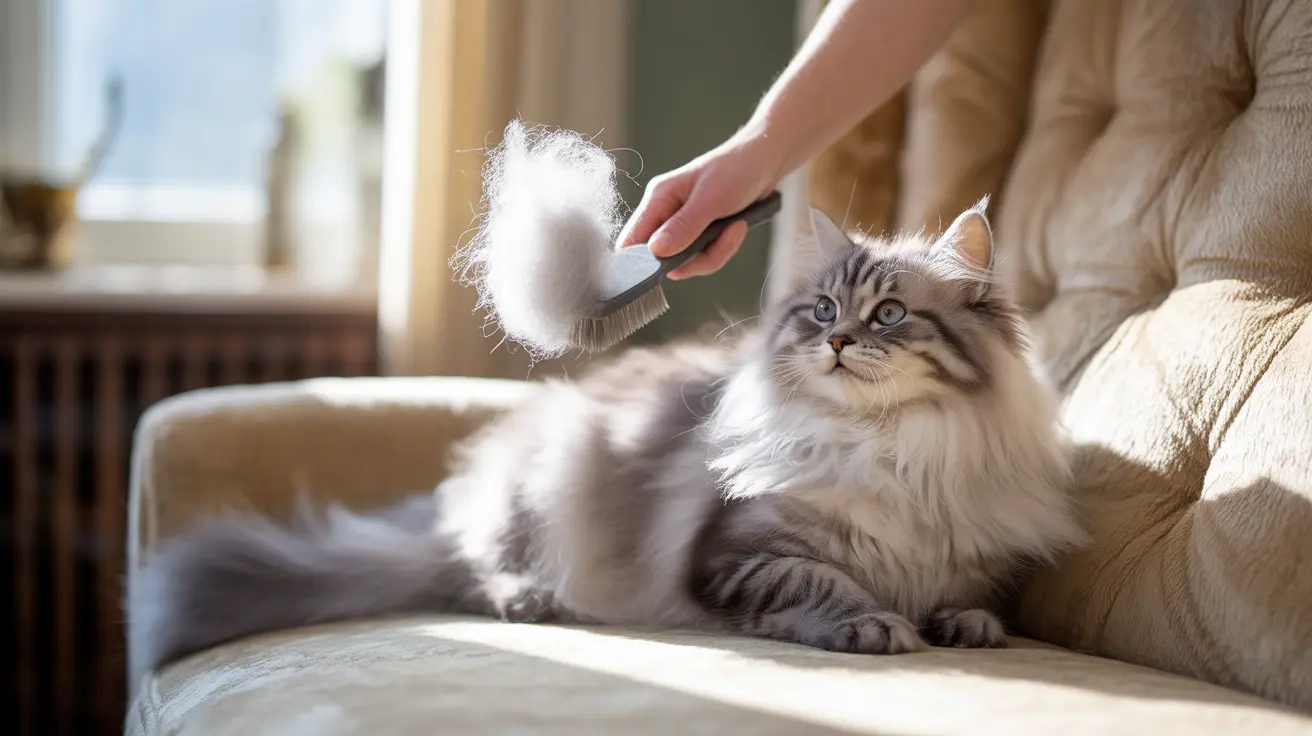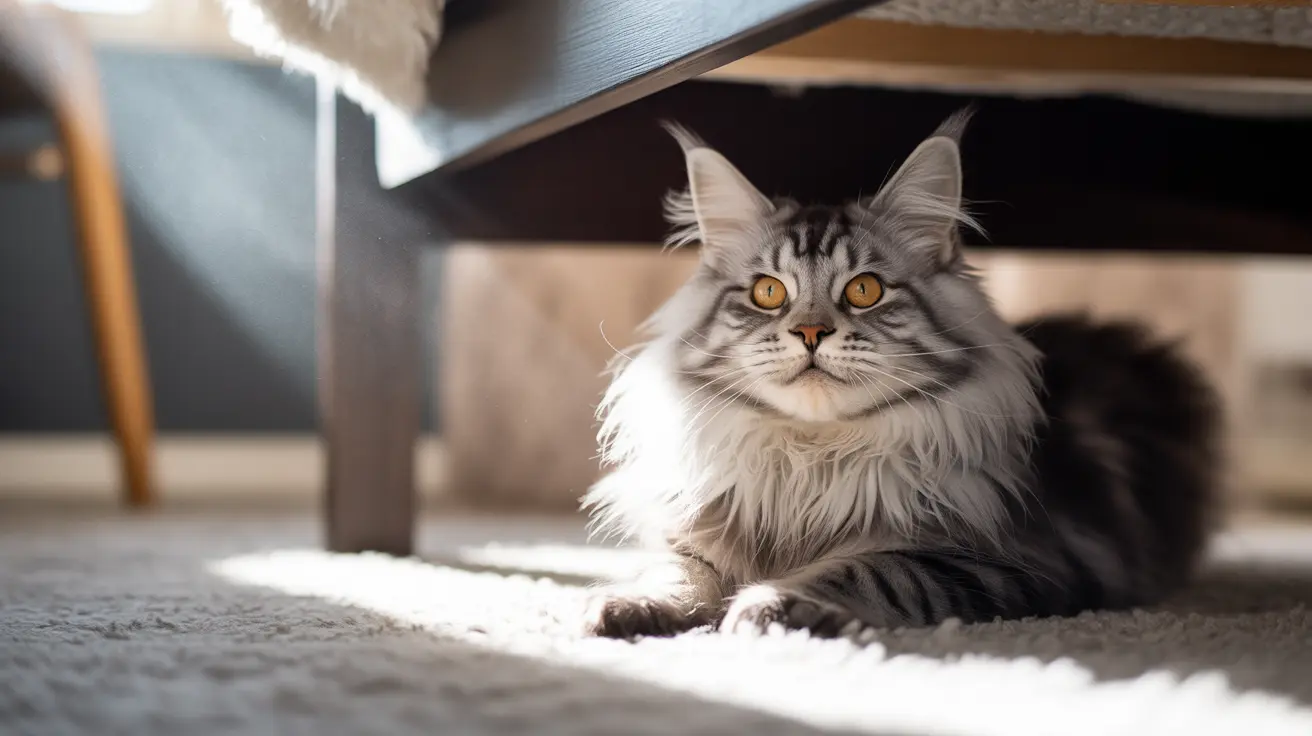How to Remove Cat Hair from Clothes and Home: The Ultimate Guide for Pet Owners
Living with a beloved feline companion means accepting that cat hair will become a constant presence in your home and on your clothing. While completely eliminating cat hair is impossible, understanding effective removal techniques and prevention strategies can significantly reduce the frustration of dealing with furry fabrics and hairy furniture. Whether you're a new cat parent or a seasoned pet owner looking for better solutions, mastering the art of cat hair management will transform your daily cleaning routine.
From seasonal shedding periods to year-round fur maintenance, cats naturally lose hair as part of their healthy grooming cycle. The key to success lies not in fighting this natural process, but in developing consistent, effective methods to manage it. This comprehensive guide will walk you through proven techniques for removing cat hair from various surfaces, prevention strategies that work, and maintenance routines that keep your home comfortable for both you and your furry friend.
Understanding Cat Shedding and Hair Accumulation
Cat hair shedding is a completely natural process that occurs both seasonally and throughout the year, especially in heated indoor environments. During seasonal transitions, cats typically shed more heavily as their coats adapt to changing temperatures. However, indoor cats often maintain a consistent shedding pattern year-round due to controlled indoor lighting and temperature.
The amount and frequency of shedding varies significantly based on your cat's breed, age, health, and coat type. Short-haired breeds like Siamese cats shed differently than long-haired varieties, requiring tailored approaches to hair management. Understanding your specific cat's shedding patterns helps you develop realistic expectations and more effective cleaning strategies.
Essential Tools for Cat Hair Removal
Premium Lint Rollers and Sticky Tools
High-quality lint rollers remain one of the most effective tools for removing cat hair from clothing and fabric surfaces. Premium lint rollers with strong adhesive sheets can lift embedded hairs that cheaper alternatives leave behind. For best results, use lint rollers while wearing the garment, as this prevents hair from simply transferring to other surfaces.
Reusable sticky rubber rollers offer an eco-friendly alternative to disposable lint rollers. These tools can be washed and reused multiple times, making them cost-effective for households with heavy cat hair accumulation.
Specialized Brushes and Grooming Tools
The "Wunderbürste" and similar specialized brushes designed specifically for pet hair removal can effectively gather hair from furniture and carpeting. These tools work by using static electricity and specially designed bristles to attract and collect loose fur from various surfaces.
For clothing, rubber gloves provide an surprisingly effective solution. Slightly dampening rubber gloves and rubbing them over fabric surfaces causes cat hair to gather into small rolls that are easily collected. This technique works particularly well on upholstered furniture and clothing items.
Damp Cloth Method
A damp cloth wrung out well can effectively collect cat hair from smooth surfaces and even some fabrics. The moisture helps capture loose hairs without spreading them around, making this method ideal for quick touch-ups on furniture and hard surfaces.
Effective Grooming Strategies to Minimize Shedding
Choosing the Right Brush for Your Cat's Coat
Regular brushing represents the most effective way to minimize loose hair throughout your home. The key is selecting appropriate tools based on your cat's specific coat type. Short-haired cats like Siamese benefit from rubber grooming tools with short rubber bristles that can pick up loose hairs without causing discomfort.
Long-haired cats require a different approach, typically needing metal combs to detangle snarls and wide-bristled brushes to finish the grooming process. For cats sensitive to traditional brushing, grooming gloves provide a gentler alternative that many cats find more comfortable.
Developing a Consistent Grooming Routine
Consistency is essential when establishing an effective grooming routine. Most cats enjoy regular brushing when introduced gradually and performed gently. Start with gentle strokes and gradually increase firmness if your cat seems comfortable. Work systematically from head to tail and from upper to lower areas of your cat's body.
Focus your attention on areas where cats typically shed the most, but avoid boney joints and tops of feet where cats are often more sensitive. The objective is to remove only loose and dead hairs, not healthy fur that's still attached.
Make brushing a daily habit or schedule professional grooming appointments every four to six weeks. Regular grooming not only reduces hair accumulation in your home but also provides an opportunity to bond with your cat and monitor their overall health.
Smart Laundry Techniques for Cat Hair Management
Pre-Washing Preparation
Never wash clothes with visible cat hair still attached, as this causes hair to embed more deeply into fabric fibers. Before washing, always shake out garments outdoors to remove as much loose hair as possible. For items heavily covered in cat hair, place them in the dryer on a cool setting before washing.
This pre-drying technique helps loosen cat hair from textiles, allowing the dryer's lint filter to collect most of the fur before the washing cycle. Using dryer balls during this process can further enhance hair collection in the lint trap.
Washing Machine Maintenance
Regular maintenance of your washing machine's lint filter prevents buildup that can reduce cleaning efficiency. Clean the filter frequently and allow the machine to air out between uses to prevent moisture accumulation and maintain optimal performance.
When washing new textiles, add fabric softener to reduce cat hair adherence in future washes. This creates a smoother fabric surface that doesn't trap hair as readily.
Advanced Home Cleaning Strategies
Specialized Vacuum Techniques
Regular vacuuming with specialized pet hair vacuum cleaners effectively removes cat hair from carpets and upholstery. Models like the Aqua Pet&Family or handheld pet-specific vacuums are designed to handle the unique challenges of pet hair removal.
On hardwood floors, electrostatic or microfiber dry mops work more effectively than traditional vacuuming for trapping pet hair. These tools use static electricity to attract and hold hair rather than simply pushing it around.
For carpeted areas, try scraping with a rough surface like a pumice stone before vacuuming. This technique gathers hair into clumps that are easier for your vacuum to collect.
Furniture and Upholstery Care
Remove pet hair from fabric-covered furniture using a damp rubber glove run over the surface. The combination of moisture and rubber texture effectively collects hair into manageable clumps. For routine maintenance, use lint rollers weekly on frequently used furniture pieces.
Consider using furniture covers or throws that can be easily removed and washed regularly. This approach protects your primary furniture while creating easily manageable cleaning zones.
Environmental Solutions for Reduced Hair Accumulation
Air Purification Systems
Install air purifiers with HEPA filtration to trap airborne pet hair and particles like dander, bacteria, dust, and lint. These systems are especially beneficial in homes where family members have allergy concerns, as they continuously filter the air to reduce floating pet hair and allergens.
Strategic Prevention Measures
Prevent cats from sleeping on clean clothes piles or inside laundry baskets, as they will rub hair into fabrics during rest periods. Create designated sleeping areas with washable bedding that can be cleaned regularly.
Vacuum shared spaces like sofas more frequently, as these areas accumulate the most hair transfer between pets and humans. Focus on areas where you and your cat spend the most time together.
Health Considerations and When to Seek Veterinary Care
While regular shedding is completely normal, excessive hair loss or the appearance of bald patches may indicate underlying health issues requiring veterinary attention. Healthy feline fur serves as an indicator of overall wellbeing, so significant changes in shedding patterns warrant professional evaluation.
Monitor your cat's coat condition during regular grooming sessions. Sudden increases in shedding, changes in fur texture, or skin irritation should prompt a veterinary consultation to rule out health problems.
Frequently Asked Questions
- Q: How often should I brush my cat to minimize shedding?
Most cats benefit from daily brushing, especially during seasonal shedding periods. For cats with shorter coats, brushing every other day may be sufficient, while long-haired breeds often require daily attention to prevent matting and reduce loose hair accumulation.
- Q: Can I use regular lint rollers on my cat's furniture?
Yes, lint rollers work effectively on cat furniture like cat trees and scratching posts. For routine maintenance, use lint rollers weekly and vacuum the entire structure. Clean fabric components monthly with pet-safe disinfectants, avoiding products containing ammonia, bleach, or other harmful chemicals.
- Q: Why does putting clothes in the dryer before washing help remove cat hair?
Using the dryer on cool settings before washing helps loosen cat hair from fabric fibers. The tumbling action and air circulation cause loose hairs to separate from the fabric, where they're collected in the lint trap rather than becoming embedded during the wash cycle.
- Q: Are rubber gloves really effective for cat hair removal?
Rubber gloves are surprisingly effective when slightly dampened and rubbed over fabric surfaces. The rubber texture creates static electricity that attracts cat hair, causing it to gather into small rolls that are easily collected. This method works well on both clothing and upholstered furniture.
- Q: What's the best way to remove cat hair from hardwood floors?
For hardwood floors, electrostatic or microfiber dry mops work more effectively than vacuuming. These tools attract and trap pet hair using static electricity rather than pushing it around. Rubber brooms and squeegees also attract hair better than traditional bristled brooms.
- Q: How can I tell if my cat's shedding is normal or indicates a health problem?
Normal shedding occurs gradually and evenly across your cat's body. Watch for warning signs like excessive hair loss, bald patches, changes in fur texture, skin irritation, or sudden increases in shedding. These symptoms may indicate health issues that require veterinary evaluation.
- Q: Should I vacuum my cat directly to remove loose hair?
Some cats may tolerate being vacuumed if they're comfortable with loud noise, but this isn't necessary or recommended for most cats. Regular brushing with appropriate tools is safer and more effective for removing loose hair directly from your cat's coat.
Conclusion
Successfully managing cat hair in your home and on your clothing requires a combination of consistent grooming, strategic cleaning techniques, and the right tools for the job. Remember that completely eliminating cat hair is unrealistic, but implementing these proven methods will significantly reduce accumulation and make maintenance much more manageable.
The key to success lies in developing routines that work for both you and your cat. Regular grooming not only reduces shedding but also strengthens your bond with your feline companion while allowing you to monitor their health. Combined with smart cleaning strategies and proper tool selection, you can maintain a comfortable, hair-managed home that both you and your cat will enjoy.





